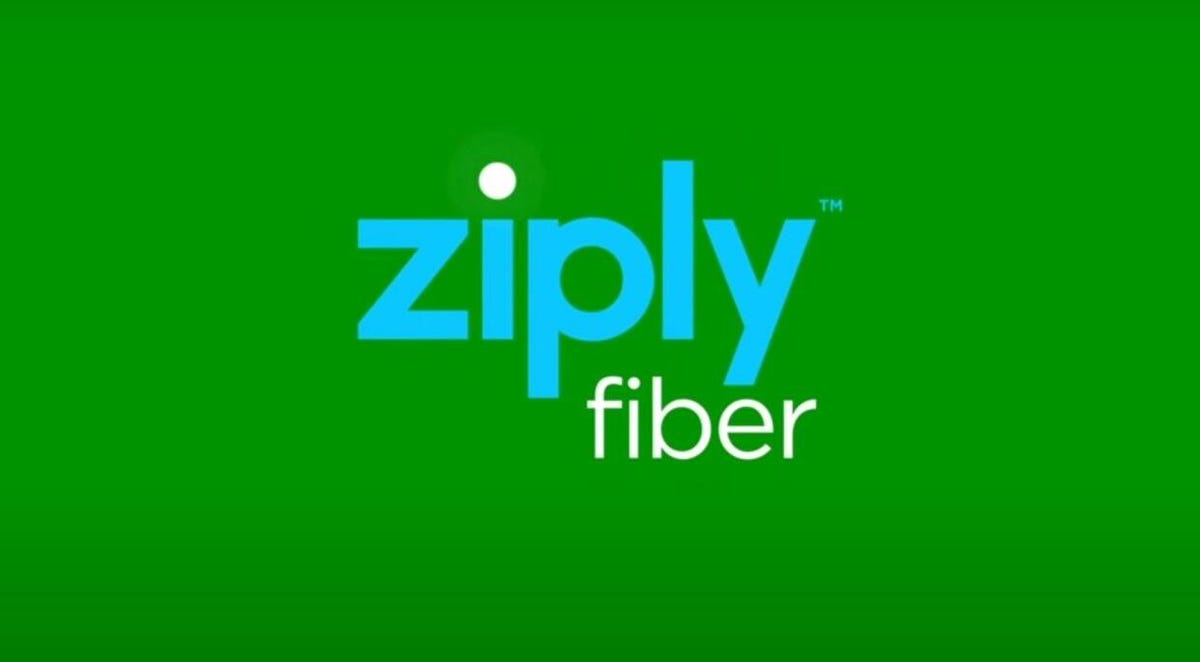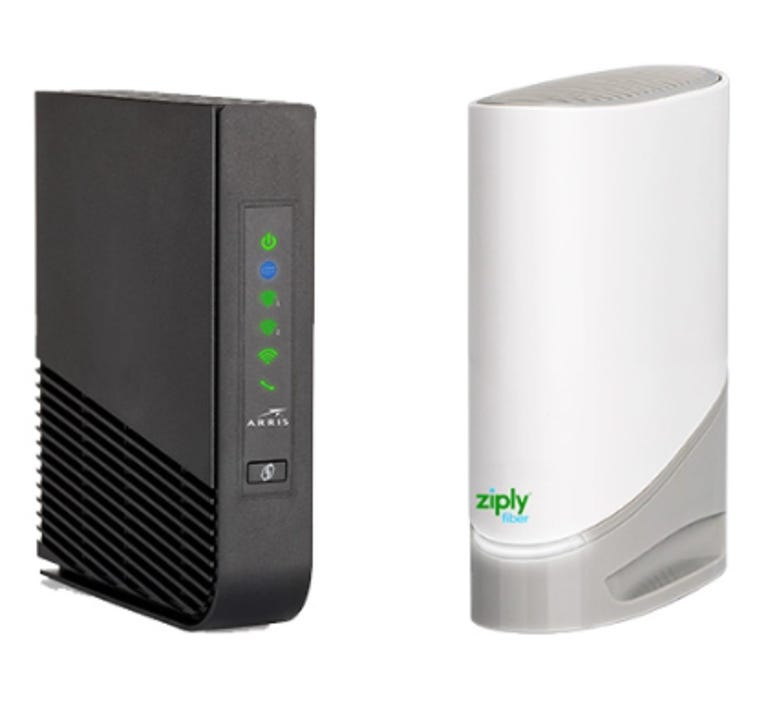Unavailable in Provider unavailable in 90001
Ziply Fiber home internet rating
Pros
- Straightforward, competitive pricing
- No data caps, contracts or credit checks
- Dedication to fiber expansion, even in rural areas
Cons
- Lots of room to grow fiber service
Ziply Fiber internet plans
| Plan | Monthly price | Max speeds | Fees and service details |
|---|---|---|---|
| Ziply Internet | $75 | 115Mbps, 7Mbps up | $12 equipment fee , no data caps, 12 month contract |
| Fiber 100 | $20, $45 after 12 months | 100Mbps down, 100Mbps up | $12 equipment fee , no data caps, no contract |
| Fiber 300 | $40, $65 after 12 months | 300Mbps down, 300Mbps up | $12 equipment fee , no data caps, no contract |
| Fiber Gig | $60, $85 after 12 months | 1,000Mbps down, 1,000Mbps up | $12 equipment fee , no data caps, no contract |
| Fiber 2 Gig | $70, $90 after 12 months | 2,000Mbps down, 2,000Mbps up | $12 equipment fee , no data caps, no contract |
| Fiber 5 Gig | $120 | 5,000Mbps down, 5,000Mbps up | $12 equipment fee , no data caps, no contract |
| Fiber 10 Gig | $300 | 10,000Mbps down, 10,000Mbps up | $12 equipment fee , no data caps, no contract |
| Fiber 50 Gig | $900 | 50,00Mbps down, 50,00Mbps up | $12 equipment fee , no data caps, no contract |
Show more (4 items)
We at CNET perform hands-on testing on all kinds of products, but internet service is a bit tricky as ISPs operate in specific areas. I live 2,300 miles from the closest Ziply Fiber market, but I would love to test their 50-gig internet plan.
That’s definitely “test,” and not “buy.” The $900 monthly rate pushes the plan well outside of my household budget, but the 2-gig plan, with symmetrical speeds of 2,000 megabits per second starting at $70 a month, would do nicely.
Ziply Fiber offers a variety of plans to meet any speed need or budget, more so than nearly any other ISP I have encountered. The plan selection alone makes Ziply Fiber worth checking out. There are six different speed tiers to choose from, each of which offer symmetrical download and upload speeds, a significant advantage of fiber internet service compared with other internet types, such as cable.
Ziply Internet, a DSL service, is also worth checking out in rural areas. There’s only one plan — $75 a month for the fastest speeds available, up to 115Mbps — so the overall value of Ziply Internet will largely depend on the available speeds at your address.

Which Ziply Fiber plan is best?
If you’re a light internet user — or just fed up with the single-digit upload speeds that often come with cable, DSL, satellite and other modes of internet — then Ziply’s entry-level fiber plan might be a good fit.
Speeds of 100Mbps over a fiber connection could be enough speed for light streaming and browsing on two, maybe three devices, but I wouldn’t rely on it for much more than that. For context, the FCC defines broadband as a connection delivering at least 100Mbps down and 20Mbps up.
The upgrade to 300Mbps will better support HD streaming, online gaming and working from home on multiple devices at once, but to get the best bang for your buck, I recommend skipping the first two plans and going straight for the gig. Ziply Fiber’s gigabit plan is lower priced than most fiber or cable providers at $60 a month, and it offers significantly greater value than the 100/100 and 300/300 plans.
Ziply Fiber Wi-Fi, fees and service terms
Ziply Fiber fees and service terms largely favor the customer. Wi-Fi equipment fees are lower than most providers and come with whole-home connectivity, while unlimited data and no contract requirements eliminate the risk of surprise hidden costs.

Equipment lease includes whole-home Wi-Fi
At $12 per month, Ziply’s equipment lease fee is already on par with or lower than most providers, but few providers include whole-home Wi-Fi service with the equipment fee.
Ziply Fiber’s equipment rental currently includes a free upgrade to whole-home Wi-Fi at no extra cost. In addition to the router, Ziply Fiber Whole Home Wi-Fi service comes with customized Wi-Fi installation and configuration and up to three Wi-Fi extenders.
Ziply Fiber service terms and fees won’t add to your bill
Most DSL and fiber-optic internet providers do not have data caps or contracts, and Ziply Fiber is no different. Customers can comfortably anticipate their initial costs and monthly pricing with no data caps, contracts, or credit checks. Installation is also included at no extra cost for new customers, as is the first month of service.
All that said, most providers will offer unlimited data, contract-free service, free installation and some promotional offers like gift cards or streaming services. Still, there’s a lot to like about an internet provider that offers relatively straightforward pricing without arbitrary contracts or data caps — Ziply Fiber delivers that.

Ziply Fiber availability
At the time of acquisition, around 30% of the networks received from Frontier Communications consisted of fiber-optic lines. Since then, Ziply Fiber has aggressively expanded its fiber footprint to more than 50% of coverage areas.
A Ziply Fiber spokesperson told CNET that the company plans to reach 80% fiber coverage in coming years.If and when the company reaches 80% fiber coverage, it will have brought fiber connections to more than 1.5 million residents in the Northwest that did not otherwise have one under Frontier, including many residents of rural areas.
Ziply Fiber expansions have thus far included small towns such as Tekoa, Washington, and Troy, Montana, both with populations of under 1,000, and more prominent cities throughout the Northwest.
Fiber expansion lightens the load on DSL networks
The arrival of fiber-optic service is exciting news for those who can get it, but it can also be somewhat of a blessing in disguise for Ziply Internet (DSL) customers who can’t.
A Ziply Fiber spokesperson tells CNET that “every customer who moves off of the copper network improves the capacity, reliability and exhibited speed for those who remain, so our goal is to move as many people as possible to fiber as quickly as possible to improve service for everyone.”
In other words, fiber expansion is a win-win for Ziply customers, though perhaps some more than others. Either way, Ziply Fiber seems genuinely invested in improving service for everyone in its service area, and I like that.
Ziply Fiber vs. cable internet competitors
I’ve compared Ziply Fiber to other DSL and fiber-optic providers thus far, but it’s unlikely that you’ll find those providers in the same service areas as Ziply Fiber. What’s more likely is that you’ll have the option of Ziply Fiber and cable internet from Spectrum, Xfinity or others.
A good rule of thumb is that cable is better than DSL and fiber is better than cable. So if Ziply Fiber service is available in your area, I’d consider it over cable. Still, if Ziply Internet (DSL) is my only option, I’d likely look at cable first, depending on what DSL speeds are available.
Ziply Fiber can deliver gig download speeds, as can most major cable internet providers, but the fiber-optic connection comes with the advantage of symmetrical upload and download speeds. As a result, you’ll get a better connection for working and learning from home with Ziply Fiber versus a cable connection. Fiber-optic service also has better reliability and connection quality than cable.
As for pricing, Ziply Fiber plans are priced lower than most cable providers. Xfinity does offer a 150Mbps plan for around $20 per month, but the equipment fee is higher than Ziply Fiber’s, and customers may be required to sign a one-year contract to get the lowest price. On the other hand, Spectrum has a lower equipment fee than Ziply Fiber, along with unlimited data and contract-free service, but starting prices are much higher at $40 to $50 per month.
In short, Ziply Fiber will likely present cheaper plan options, faster upload speeds and better reliability than cable internet.
Ziply Fiber customer satisfaction
Ziply Fiber isn’t included in customer satisfaction reports from the ACSI or J.D. Power yet, so I turned to the Better Business Bureau for insight into what actual customers think of the service so far.
The BBB gives Ziply Fiber a “B” rating while customer reviews gave it a score of 4.2 out of 5. While an “A” rating would be ideal, the customer review score is highly impressive on its own. For comparison, Frontier currently has a 1.05, Spectrum a 1.08 and Xfinity a 1.28 customer review score listed by the BBB.
Summing it all up
Ziply Fiber has low pricing but slower fiber speeds to match unless you go with gig service. If 100 or 300Mbps is enough for your home, I’d take advantage of that low pricing, but gig service will be the best option for everyone else.
As for Ziply Internet, the DSL service, the value of your plan will depend on the actual speeds available at your location. Your DSL service could improve as Ziply’s fiber footprint expands, but the best outcome of all would be for fiber to make its way to your address and eliminate the need for DSL altogether. Here’s hoping Ziply keeps making progress.
Ziply Fiber FAQs
What speeds does Ziply Fiber offer?
Ziply Fiber offers a variety of plans with symmetrical upload and download speeds ranging from 100Mbps to 50Gbps, or 50,000Mbps, with speeds of 300Mbps, 1Gbps, 2Gbps and 10Gbps in between.
Does Ziply Fiber have data caps or contracts?
No. All Ziply Fiber plans are contract-free and include unlimited data.
What is the cheapest Ziply Fiber plan?
Ziply Fiber’s cheapest plan, Fiber 100/100, starts at $20 a month. Pricing goes up a bit to $45 after one year of service, and a $12 equipment rental fee will add to your monthly bill if you choose to rent a router.



















+ There are no comments
Add yours